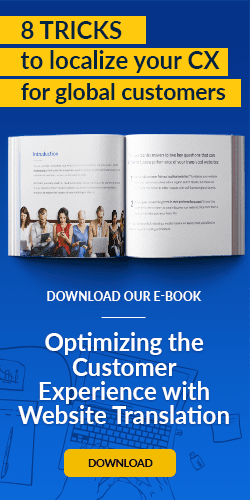The success of your global business hinges on serving customers whose first language isn't English. Smartly communicating with them online in their preferred languages can supercharge brand awareness and conversions.
Take a closer look at the U.S. market. There, Spanish-speaking Hispanic business owners are a fast-growing-and increasingly influential and affluent-B2B buying population. While most are comfortable speaking English, many prefer transacting with customers, and vendors like you, in their language of birth.
Most Spanish-speaking Hispanic business owners are bilingual, but many prefer doing business in Spanish.
Offering these business owners an online experience localised in Spanish can give your company a strong competitive advantage. It boosts your brand's credibility, and can improve conversion rates and lead generation.
The proxy-based approach to translating your website—in which technologies are used to leverage the code and content of your flagship site in ways that eliminate effort for you—is widely considered the most elegant and efficient solution on the market. Read on to learn more.
The Power of the Proxy
You might be tempted to translate your site using plugin “connectors” that interface with your flagship site’s CMS. They sound like a good solution in theory, but they’re simply not up to the rigors of day-to-day website translation.
They usually require development and customisation to properly interface with the CMS you've meticulously tweaked and optimised for your needs. Their translation capabilities are underwhelming and slow. Also, they don't have the robust marketing functionality you need, like key integrations with your martech or campaign platforms.
Plus, if you decide to switch CMSs, you're back at square one. All those customizations to play nice with your old CMS have to be repeated, and maintained, all over again.
Using plugin connectors with your CMS is tempting – but they’re simply not up to the rigors of day-to-day website translation.
The proxy approach is different. Proxy translation works independently of your CMS, and is purpose-built to deliver superior localization of your site’s translatable content, regardless of its format or where it lives online.
Proxy technology can automatically detect all of the translatable content on your site-and we mean all of it, from text, images and video, to even dynamically-loaded content from third-party applications. The proxy then queues this for translation by seasoned, expert teams using efficient translation technologies and workflows.
The proxy approach can be used with any tool, any site or any programming language. It offers seamless migration if you decide to redesign or re-platform your site.
The result? A fast, efficient, and optimised web experience that your Hispanic visitors can enjoy in the language that they prefer, all while reducing your development effort and translation costs.
The Advantage of Turn-Key
There are translation proxies, and then there are fully turn-key proxy translation solutions. Working with a fully turn-key provider has a number of advantages:
Speed to Market: They can get your Spanish-language site up and running, in-market, in as little as 30 days.
Efficiency: They enable you to translate your content once, and store that content into a special translation memory database. These translations can be used elsewhere—from other web pages to multichannel marketing—as many times as you wish, at no additional cost to you.
Intelligent Change Detection: Any changes you make to your flagship site will be automatically detected, and the content routed for immediate translation. The best vendors deliver these translations in about one working day, no matter what.
Adaptability: The best proxy solutions never flinch at translating multimedia content, from images to video captions and content populated through other applications.
Managed Hosting: You’ll never have to worry about hosting a separate site for your Hispanic audiences, because it’s all part of the solution.
Site Optimisation: Expert teams ensure that your Spanish-language site performs just as well in search results as your flagship site, using SEO best practices such as hreflang implementation, localised sitemaps, authoritative keyword research and more.
By combining advanced proxy-based technology for translation along with additional services and industry-leading capabilities, a turn-key solution takes the burden and complexity of website translation off your internal teams, and helps you stay focused on serving the robust Hispanic B2B customers that you know can grow your business.
Conclusion
Digital drives business today. Meet your Spanish-speaking U.S. customers in their research channel of choice-the Internet-in their language of choice. Doing so supports them with high-quality content, tailored to their needs. That can make the difference between closing, or losing, a sale.
Leveraging a turn-key proxy translation solution brings you a cost-efficient, low-stress way to leverage your existing English-language content to reach these business owners, without taking on new staff or purchasing expensive new technologies.
With minimal additional investment, you can tap into an energetic marketplace, reach growing businesses, and stay relevant to the Hispanic business landscape.
Last updated on April 13, 2018
